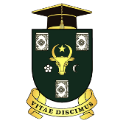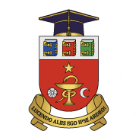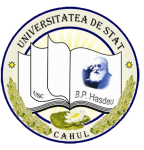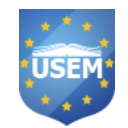Introduction to Moldova State University
The State University of Moldova is the oldest and largest institution of higher learning in the Republic of Moldova. It was founded on October 1, 1946. It was formerly known as the State University of Chisinau. It is located in Chisinau, the capital of Moldova, and is an important center of higher education, scientific research and culture in the country.
History
The school was founded in Chisinau in 1946. It initially had five faculties, including physics and mathematics, geology and soil science, history and linguistics, biology and chemistry, with a total of 320 students and 35 teachers.
In 1969, the State University of Moldova joined the International Association of Universities as a full member.
In 2001, the school became the first state-recognized higher education institution in Moldova.
In May 2005, the school joined the Bologna Process to integrate into the modern training model.
School Strength
Faculty: It has a highly qualified faculty team with a total of 1,145 teachers, including many internationally renowned scholars and experts.
Student size: The school has about 20,563 students, 11 faculties, 4 doctoral schools, more than 100 bachelor's and master's programs.
International cooperation: more than 60 cooperation agreements in the fields of education and science have been signed with university centers in 25 countries, and about 80 Students from various countries, the international influence is constantly improving.
Institutional nature
The State University of Moldova is a public university.
Educational philosophy
The school is committed to providing high-quality education, cultivating high-quality professionals with innovative spirit and practical ability, focusing on the all-round development of students, and encouraging students to actively participate in scientific research and social practice activities to improve students' comprehensive quality and competitiveness.
Key laboratories and disciplines
Key disciplines: covering biology, chemistry, physics, mathematics, computer science, law, history, philosophy, journalism, psychology, education, sociology, economics, international relations and other disciplines, some of which have high visibility and influence at home and abroad.
Key laboratories: No specifically named key laboratories have been found in the school, but judging from its comprehensive strength in scientific research and teaching, there must be a series of professional laboratories on campus that support research and practical teaching in various disciplines, which are used to carry out basic scientific research, applied technology research and development, social science investigations and other work.
Department Settings
The school has the following departments:
Department of Biology and Earth Sciences
Department of Chemistry and Chemical Technology
Department of Law
Department of Physics and Engineering
Department of History and Philosophy
Department of Journalism and Communication
Department of Literature
Department of Mathematics and Computer Science
Department of Psychology, Education, Sociology and Social Work
Department of International Relations, Political Science and Public Administration
Department of Economics
Ranking
In the 2022 QS Emerging Europe and Central Asia University Rankings, the National University of Moldova ranks 301-350.
Expenses
At the undergraduate and master's level, if you apply for the China-Mordovia Intergovernmental Tuition Free Program, you can be exempted from tuition fees. In addition, you need to pay other fees such as registration fees and accommodation fees. The registration fee is about 100-300 euros/year, and the accommodation fee is about 50-100 euros/month.
Campus
Location: Located in Chisinau, the capital of Moldova, the city is the political, economic, cultural and educational center of Moldova. It has been in the country since 15 AD. It was established in the 18th century and has been ruled by many dynasties. It has a rich cultural heritage and historical heritage.
Environment and facilities: The campus environment is beautiful, the architectural style is simple and elegant, and there are many important historical sites on campus, such as churches from the imperial period and monuments from the Soviet period, so that students can feel the strong historical and cultural atmosphere while studying.
-

A.Russo State University
-

Technical University of Moldova
-

Moldova State University
-

Moldova State University of Medicine and Pharmacy
-

Free International University of Moldova
-

Perspectiva University
-

The Academy of Economic Studies of Moldova
-

Bogdan Petriceicu Hasdeu State University
-

Moldova University of European Studies
-

Ion Creanga Pedagogical State University
-

Mesoamerican University
-

Istmo University
-

Mariano Galvez University of Guatemala
-

Regional University of Guatemala
-

Galileo University
-

Francisco Marroquín University
-

Rafael Landívar University
-

University of the Valley of Guatemala
-

University of San Carlos of Guatemala
-

Technological Institute of Tlaxcala Plateau
-

Golfo University
-

Technological University of South Sonora
-

Technological University of Huejotzingo
-

Tizimín Institute of Technology
-

Chilpancingo Institute of Technology
